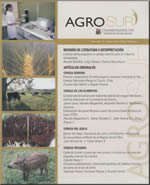Listeria monocytogenes a permanent threat for the food industry
Main Article Content
Abstract
Listeriosis is a serious food borne disease with a low frequency of presentation, that causes death in 30% of the cases. The bacterium responsible, Listeria monocytogenes, is found widely distributed in nature where it can survive for long periods of time. The main sources of infection for humans are ready-to-eat foods, especially those kept refrigerated for long periods of time. In the food industry the pathogen survives the cleaning and sanitation process due to its capacity to develop biofilms on working surfaces and equipment. In order to control the development of L. monocytogenes in food and food processing environments, the use of innovative products obtained and isolated from plants and microbes are being studied. In the USA a reduction of cases during the last years has occurred, and in Europe the disease appearance is still erratic. This decrease is assumed in part to be due to the implementation of systems such as HACCP by the food processing companies, but it is also due to a better informed consumer. This paper provides information about the pathogen, the food transmitted disease and control measures available in the food processing industry.

